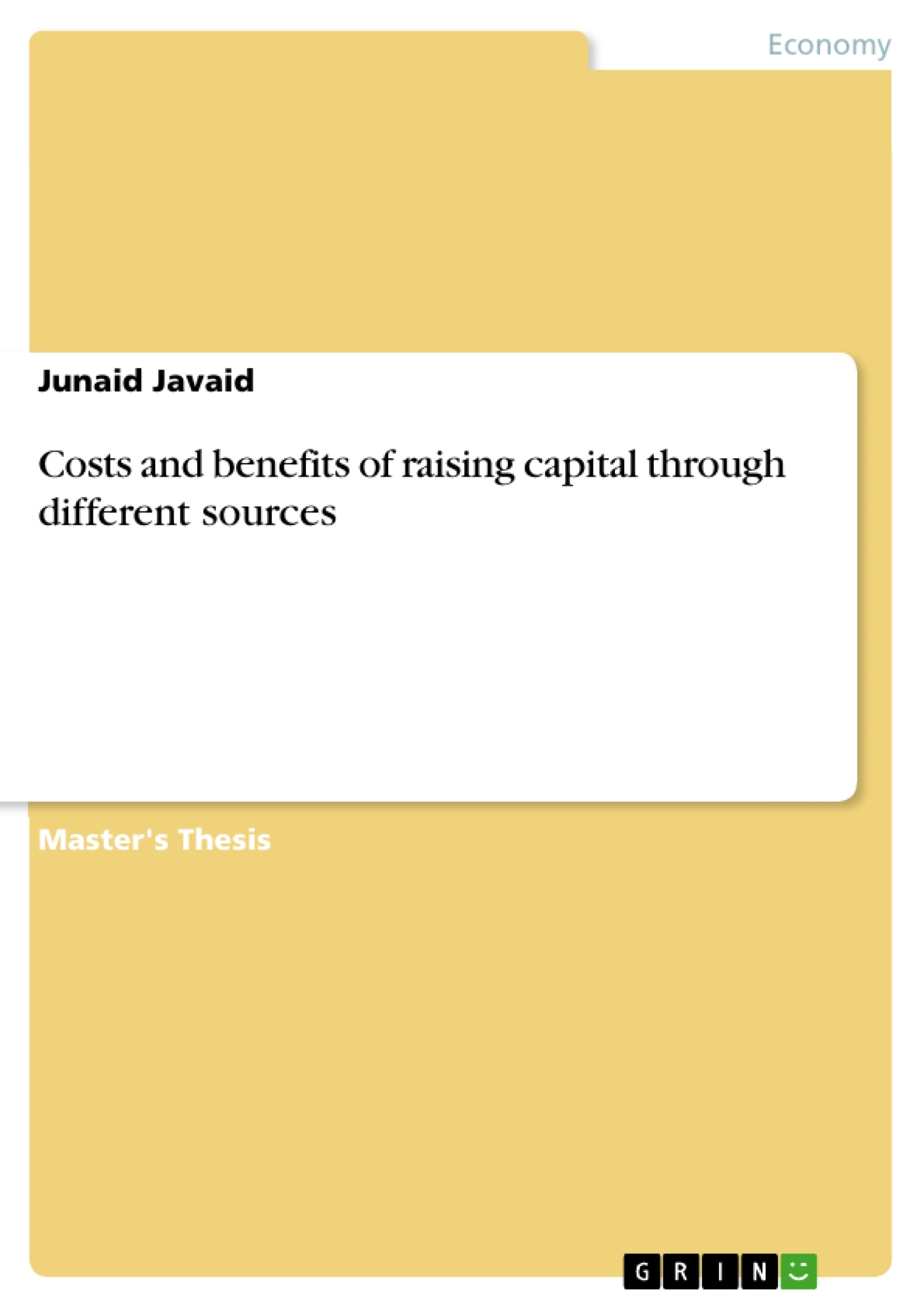This theory into practice final project is written on the topic of ‘Costs & Benefits for Raising Capital through Different Sources’. Major aim of this theory into practice report would be to let know readers about all of form funding sources (that would make possible for the companies in meeting their working capital needs). It has been understood that the method or process of acquiring capital through different sources is termed as Financing Decision. The Corporations are actively recruiting financial managers mainly for the successful execution of financial decision.
Generally, there have been various sources of funds that could be utilised by companies for meeting their working capital needs. It has been observed that with the utilisation of funds from different sources not only made possible for the underlying firm to survive through difficult periods but would help it in expanding its operations as well. All of these sources are classified in to five main classes: Internal Financing, Security Financing, Lease Financing, Loan Financing and other sources. Internal financing intends on the approach of reinvesting of company’s earning either for meeting working capital needs or for expanding company’s operations. Security Financing is all about issuing of company’s shares of different kinds.
A company could source capital through loan financing which is determined as an agreement that it would repay principal amount it to the lender in a specified time along with monthly interest payments. Lease financing is actually an agreement between two parties under which one party is interested in using other party’s asset for a specified period. Venture capital is considered as relatively new source of finance. From an investor point of view, it is most risky investment. In accordance with trade credit, it is an option would be given to a company to procure goods by its supplier(s) without paying anything to them in advance. Overdraft is basically provided in a form of special facility to a company in any sector by banks to withdraw more cash from a company than an actual amount. It has been understood from the findings of this report that each source has positive and negative aspects. Company’s management should have to analyse impact of each source on the company’s position in the long term.
Table of Contents
- Chapter-1. Background Context
- 1.1. Background Context
- 1.2. Motivation
- 1.3. Aims & Objectives
- 1.4. Method of Analysis
- 1.5. Description of Chapters
- Chapter-2. Literature Review
- 2.1. What is meant by Financing Decision?
- 2.2. Capital Structure
- 2.3. Agency Theory
- 2.4. Trade-Off Theory
- 2.5. Sources of Funds
- 2.6. Internal Financing
- 2.6.1. Retained Profit
- 2.7. Security Financing
- 2.7.1. Ordinary Shares
- 2.7.2. Preference Shares
- 2.8. Loan Financing
- 2.8.1. Bank Loans
- 2.8.2. Debentures
- 2.9. Lease Financing
- 2.9.1. Operating Lease
- 2.9.2. Finance Lease
- 2.10. Other Sources of Financing
- 2.10.1. Venture Capital
- 2.10.2. Trade Credit
- 2.10.3. Overdraft
- Chapter-3. Case Studies
- 3.1. Case Study on UK Government's Bailout Package for Bank
- 3.1.1. RBS (Royal Bank of Scotland)
- 3.1.2. Llyods Banking Group PLC
- 3.1.3. Barclays PLC
- 3.1.4. Findings
- 3.2. Case Study on Shanghai General Motors Corporation (SCMC)
- 3.2.1. Findings
- Chapter-4. Analysis
- 4.1. Analysis
Objectives and Key Themes
This final project examines the 'Costs & Benefits of Raising Capital Through Different Sources'. It aims to educate readers on various funding sources available to companies to meet their working capital needs. The project focuses on how companies make financing decisions, analyzing the different sources of funds and their associated costs and benefits.
- Understanding the different sources of capital available to companies.
- Analyzing the costs and benefits associated with each source of financing.
- Examining the impact of financing decisions on a company's financial leverage and performance.
- Exploring real-world case studies of successful and unsuccessful financing strategies.
- Providing recommendations for companies seeking to optimize their capital structure and raise funds effectively.
Chapter Summaries
Chapter 1 provides a background context for the study, introducing the importance of financing decisions for organizations. It emphasizes the need for companies to secure adequate capital to meet their working capital needs and highlights the costs associated with external funding sources.
Chapter 2 delves into a literature review, exploring key concepts related to financing decisions, including capital structure, agency theory, and trade-off theory. It further discusses various sources of funds, such as internal financing (retained profits), security financing (ordinary and preference shares), loan financing (bank loans and debentures), lease financing (operating and finance leases), and other sources like venture capital, trade credit, and overdrafts.
Chapter 3 presents case studies, examining the UK government's bailout package for banks and the financing strategy of Shanghai General Motors Corporation (SCMC), highlighting the different challenges and opportunities faced by companies in securing capital.
Chapter 4 delves into the analysis of the findings, providing insights into the effectiveness of different financing strategies and the impact of financing decisions on a company's financial position.
Keywords
The primary keywords and focus topics include financing decisions, capital structure, working capital needs, cost of capital, internal financing, security financing, loan financing, lease financing, venture capital, trade credit, overdraft, financial leverage, financial performance, case studies.
- Quote paper
- Junaid Javaid (Author), 2015, Costs and benefits of raising capital through different sources, Munich, GRIN Verlag, https://www.grin.com/document/304687



